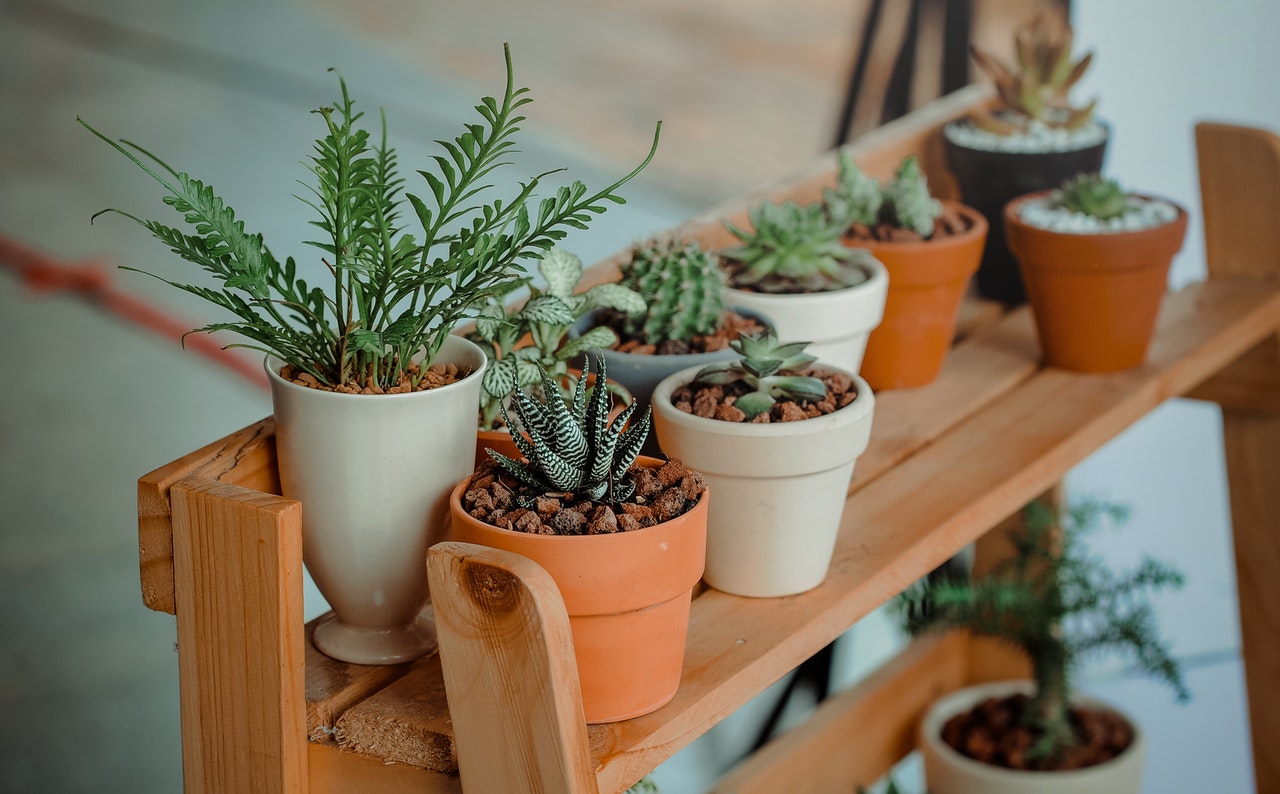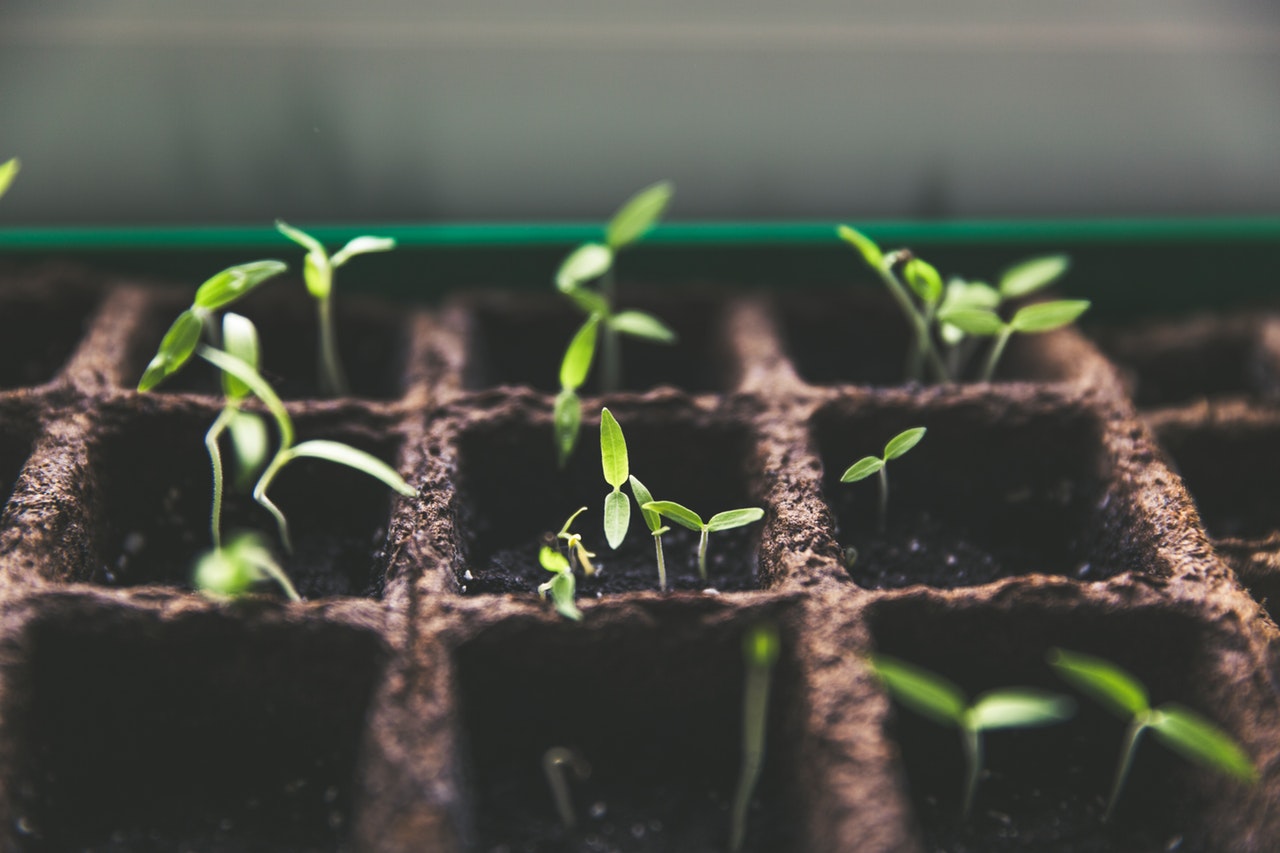Transporting ingredients can leave a lot of carbon footprint. One of the ways to reduce it is to source your ingredients locally. But the best way to do it is to grow your own food. Maybe you need a lot more time than just simply going to your local market and buy things. But the feeling of eating your food from the things that you’ve successfully taken care of is just rewarding.
Besides, there are a lot of benefit to having plants in your house. Your house will look a lot more serene, beautiful, and green. It will also provide clean air to your house naturally, as a greener alternative to air fresheners or purifiers.
“But I’ve only got small space!” Fret not, door is always open for those who knock. Small spaces are a pain, but if we can outsmart the obstacles, we’re going to have a good time. So how do you grow your food in small spaces? Well, it all starts from growing plants that you like to eat or use frequently (like herbs). There’s no point of growing celery if you can’t stand them. Then..
Start with smaller plants

Because small space attract small items, right? Well, it goes for plants too. It’s wise to not rush things up and plant big plants like an apple tree when you’ve only got 30 sqm house. Besides, if you don’t have enough experience on growing plants, you’ll likely end up killing them. So it’s best to plant one or two when you’re starting up.
Nothing that involves a life being can be done instantly, so don’t expect that you’ll be a gardener master overnight (this isn’t The Sims after all). Choose something that won’t die easily like aloe (good for drinks and hair) or veggies for beginners such as lettuce, carrots, and cherry tomatoes. Lettuce is a cut-and-come-again plant, meaning that you only need to snip the tops off when you’re harvesting them, and they’ll grow again.

To save some money, you can also plant things that you usually use in your kitchen like potatoes, shallots, garlic, and herbs. For garlic and shallots, you only need to plant one immature bulb in the soil, and it will develop into a whole bulb (five or six small bulbs). You can try using mushroom grow boxes as well to have your own mushrooms. They are easy to take care of and with small spaces, they would be perfect.
Growing herbs (except basil) is also easy. Simply make a small herb garden by your window in boxes or containers. Early potatoes are great because they grow faster and they grow well in simple containers. In fact, almost all fruit, herbs, and veggies are completely fine in containers, so you can place and move them easily.
To ensure that your garden always runs, get plants that bloom seasonally (like only in spring and early summer, and then in winter they require a lot of work). Get plants that you can keep happy for the whole year or the ones that get dormant in autumn and winter.
Use your space wisely

The easiest way to do this is by having a vertical garden on the wall. It saves a lot of space and it’s visually pleasing as well, providing an aesthetic touch to your house (Instagrammable spot in your own house, hello). If you live in a place where sunlight is scarce, then you can get some gadget that mimics the sun, even though these things are usually pricey.
Another way is to stack pots and make tiered garden (from the biggest pot on the bottom to the smallest one on top). If you don’t want to buy new pots and prefer to recycle instead, you can use tin cans. Just cut some holes on the bottom so that the roots can drain well. (other things to do with tin cans here)

If you have a small balcony that you can use as a part of your garden, great. Because you can get a small box and plant your seeds there. This is particularly good if you’re really short of space. You simply plant some veggies and fruit together (it even works for flowers sometimes, just make sure your food plants are not really aggressive and intrusive).
Oh, you can totally plant them in a wall-hanging plant holder. It’s going to look so rustic, simple, and aesthetic, especially if you use boxes like log baskets. It can be a functional local point in your little residence, which is nice.
Take care of them well

If you neglect them, you’re going to get nothing from the plants. First of all, plants love sunlight, so placing them around good light is the main thing to do. You’ll also be reminded to take care of them because they’re placed in a bright and conspicuous area.
However, you can’t generalize all plants. Some really love and need sunlight, but others prefer in the shade or indirect sun. So the first thing you do figure out what kind of light your house has and is buy the right plants.

Make sure that you water your plants right. Some plants can be underwatered while others are overwatered. Underwatered plants have curled leaves with crispy edges, while overwatered plants are too moist, mushy with fragile yellowing leaves. Tomatoes will crack open if they’re suddenly plumped up with water. So it’s vital to water your plants right.
Soil is also important because it plays a role for the plants’ growth and it can affect the taste of your plants. That is why wine can taste different even though they’re from the same grape variety. The basics are sun, water, and soil that is rich in organic matter.
But be careful…

Small space garden has consequences. Usually gardeners rotate their crops to keep pests and diseases out of the garden. Rotating helps plants grow in different areas and it’s a great way to cut down and minimize risks. However, this can be hard in small gardens.
The best way to prevent that from happening is to be really careful and not letting problems go chaotic or unmanageable. If the worst happens and a large scale problem occurs, you should stop growing your food for a whole year. One year without home-grown food is a lot better than several years of disappointing results.
All in all, there are other ways to grow your food and we’re just giving you the easy ways here. Let us know if you’ve grown your own food in different ways than the the ones mentioned above. Have you ever eaten food which came from your own garden? Tell us your experience in the comments below. If you liked the article, leave a like and tell us what you think. Happy gardening!
source(s)
https://lifehacker.com/top-10-ways-to-bring-a-garden-into-your-small-space-1784409327
https://www.thespruce.com/vegetable-gardening-in-small-spaces-1403451
https://www.apartmenttherapy.com/get-started-growing-5-easy-small-vegetable-garden-ideas-to-try-203040



Leave a Reply